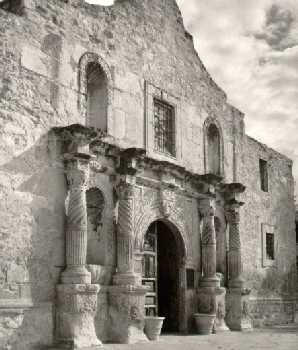
I. Introduction
Standing alone in the northeast corner of the Well Courtyard on the Alamo grounds is a small stone monument-inscribed with Japanese characters. Although the monument is not explained to the public and is largely overlooked by most tourists, it is one of the finest tributes given to honor those who died at the battle of the Alamo. Inscribed on the stele is a poem, "To the Memory of the Heroes of the Alamo." Composed by Professor Shigetaka Shiga of Japan, the poem was presented to the Alamo by him and a group of students who made the journey to Texas in 1914 just for the occasion. The poetic tribute compares the stand of the valiant heroes at the Alamo with a similar struggle in Japan waged in 1567, when gallant samurai warriors stood fast against overwhelming odds and met the death of heroes.
The tragic battle fought at the Alamo, although not decisive in the overall struggle of the time, has caught the imagination of peoples not only in this country but also in many foreign lands, and that battle has become a symbol of courage and determination. Although the building currently referred to as the Alamo is now the Shrine to Texas Liberty, and generally regarded as a fortress shrine to the martyred dead who gave their lives there during desperate battle in the early morning hours of March 6, 1836, it did, in fact, play a much broader role in the affairs of men.
 |
The old church structure, which is now the shrine, is the only original building still standing from a complex of buildings which once formed the Mission San Antonio de Valero. All other structures are now gone. Even the Long Barracks which houses the museum has been reconstructed upon old mission-period foundations. At the time of the 1836 battle, most of the mission buildings were still standing, although in sad need of repairs; and they were used as refuge by those 182 men who drew the line and kept their place to await destiny. The description of that battle has been told many times, and only that part which is directly related to the archaeological finds will be repeated here. |
The excavations in front of Alamo Shrine provided the opportunity to examine a portion of the building foundation as well as to sample the relatively undisturbed soils which lie adjacent. The stratified soils tested provided a variety of datable artifacts which represent some of the most important past events which occurred at the Alamo. Beginning with the Mission period and continuing into modern times, the artifact collections include relics from Spanish, Mexican